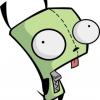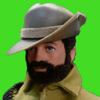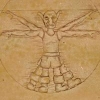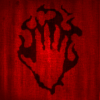Realitive size in games
what kind of sizes are used in most industry standard games. i mean if everything was microscopic you would never know because your down there with them, or everything could be huge. how would you know? would there be benefits of having a different size for one game vs other sizes.
Scale should be relative to the size of the screen the game is to be displayed on.
I think this is a Visual Arts question, so I'm moving this out of Game Design.
I think this is a Visual Arts question, so I'm moving this out of Game Design.
-- Tom Sloper -- sloperama.com
I assume that you're talking about the mapping from co-ordinate space to real measurements (e.g. metres) for 3D models. I'm not an expert myself. I have seen 3D art assets from the web default to various sizes, although rarely more than a factor of 10 difference. I imagine that most would be roughly centred around (0,0,0), and there would be a basic range because floating point numbers get sparser near the extremities. I'd be interested in an answer too.
I'm not aware of any definitive standards, AFAIK it's just an arbitrary scale that has to be set depending on the project. You usually want your grid to map to a real-life unit of measurement (imperial/metric), while also keeping your floating point values from growing too high. There are workarounds for the floating point issue, but sticking to a scale in which you can rely on accuracy is always simpler. A large-scale RTS may use a scale of .1 = 1 kilometer, while an FPS may use .1 = 1meter (I just made those numbers up, so don't quote me there). It depends somewhat on the scale of what you want to display, but mostly on personal preference.
As for the size difference between projects, you can always just scale your models accordingly. It's important to keep in mind that all these values are purely relative.
As for the size difference between projects, you can always just scale your models accordingly. It's important to keep in mind that all these values are purely relative.
A lot of times, it's 1 Unit = 1 Meter. Because it maps perfectly to real world calculations (except in places that use the old imperial measurement systems, but it's not hard to convert), and because a lot of tools to process that data assume 1 unit = 1 meter. Especially when it comes to physics and lighting.
Once it's in your game, you can use any scale that makes sense. Some engines have their own defined scales based on powers of 2, or arbitrary made up numbers.
edit:
Some people model in character units. You take the size of the main character, and base everything around that.
Once it's in your game, you can use any scale that makes sense. Some engines have their own defined scales based on powers of 2, or arbitrary made up numbers.
edit:
Some people model in character units. You take the size of the main character, and base everything around that.
what kind of sizes are used in most industry standard games. i mean if everything was microscopic you would never know because your down there with them, or everything could be huge. how would you know? would there be benefits of having a different size for one game vs other sizes.If I write [font=courier new,courier,monospace]float length = 42;[/font] then that's just 42 "units" of length. It's arbitrary as to what units you actually use.
I've worked on different games with different common units of measurement, such as 1unit = 1 metre, 1unit = 1 centimetre and even 1unit = 1 inch.
In recent times, the most common one I've seen used is metres.
At one company, we had some teams working in centimetres, and other teams working in metres, which was a nightmare when sharing staff/assets! At a certain point along our project, we decided to convert everything over to metres, which caused countless bugs for a few weeks, where we'd missed converting some things, which would appear 100 times too big or too small.
N.B. there may sometimes be technical reasons for some variables to use a non-standard measurement type. For example, if you're using 16-bit floats (AKA. half floats / short floats), then they have really good precision in the 0-1 range, but quite bad precision from 1-2 and above.
If you wanted to compress the vertices of a humanoid character (~2metres tall) down to 16-bit floats, then it might make sense to use the measurement of 1unit = 2 metres, just for those models only, so that you get good precision in your vertex positions. Inside your vertex shader, you could multiply every position by 2.0f to convert them to the standard 1unit = 1 metre.
Also, some games with really large scales might use multiple different units together, e.g. in a large-scale space game, you might have something like:
[font=courier new,courier,monospace]struct Length { float lightYears; float meters; }[/font]
or
[font=courier new,courier,monospace]struct Length { int gridCell; float kilometerOffset; }[/font]
. 22 Racing Series .
Apart from the technical way of viewing scale, IMHO the feel of scale is more important. When you look at something your brain is not thinking 'oh, this monster seems be 3m tall, that is large', no it is more of 'wow, this monster dwarves the human standing infront of it'. The brain measures scale by its relative size to already known things.
Most artists work with relative size and proportions to give the sense of scale(take a look at concept art, most often the silhouette of a human is added to give a sense for the scale) ,which is often by far not really realistic. I.e. the size of the human head in relation to its height gives you the impression of standing in front of a dwarf (5 head tall human) or a giant (10 head tall human, standard male human is about 8 head tall). A space battleship will feel only really huge if some small,tiny fighters are flying around it.
An other aspect is game design. It could be realistic to make a 200km long road if a human is only 2m height, but you would need hours to reach your destination, but the player would only accept minutes. Therefore ways and other proportions are shortened to have a more controlled impact on game design.
Therefore scale is really relative. From a technical point of view always take a one, and only one, scale which suits your work pipeline and other technical aspects, and think about introducing a relative scale, as Daaark already mentioned, like character units, which is not a technical or tool supported scale, but a helper to create content (create a 3x character unit tall monster).
Most artists work with relative size and proportions to give the sense of scale(take a look at concept art, most often the silhouette of a human is added to give a sense for the scale) ,which is often by far not really realistic. I.e. the size of the human head in relation to its height gives you the impression of standing in front of a dwarf (5 head tall human) or a giant (10 head tall human, standard male human is about 8 head tall). A space battleship will feel only really huge if some small,tiny fighters are flying around it.
An other aspect is game design. It could be realistic to make a 200km long road if a human is only 2m height, but you would need hours to reach your destination, but the player would only accept minutes. Therefore ways and other proportions are shortened to have a more controlled impact on game design.
Therefore scale is really relative. From a technical point of view always take a one, and only one, scale which suits your work pipeline and other technical aspects, and think about introducing a relative scale, as Daaark already mentioned, like character units, which is not a technical or tool supported scale, but a helper to create content (create a 3x character unit tall monster).
I'd like to add to what Ashaman just said about relative scale in-game. Sometimes that scale is intentionally off for logistical reasons, i.e. RTS games typically undersize buildings and extremely undersize air units so that the size of all units the player controls is more similar. This is mostly for screen space reasons.
Holy burning hand of wrath
piercing forever through the heart
piercing forever through the heart
This topic is closed to new replies.
Advertisement
Popular Topics
Advertisement
Recommended Tutorials
Advertisement













